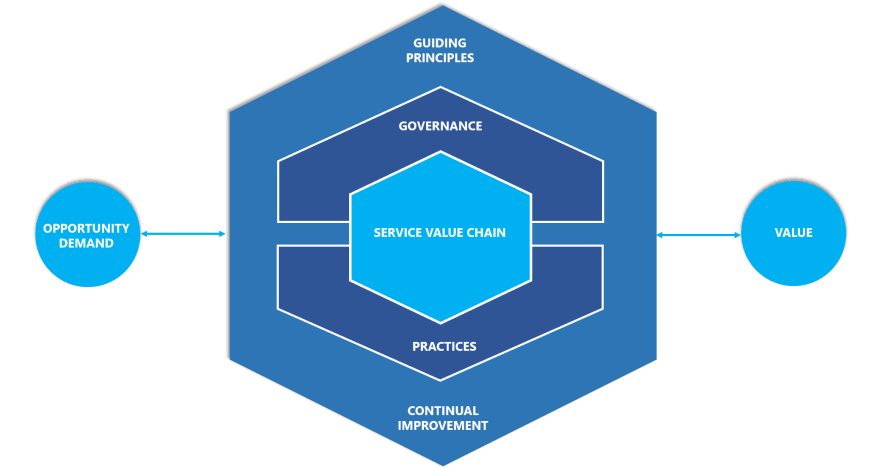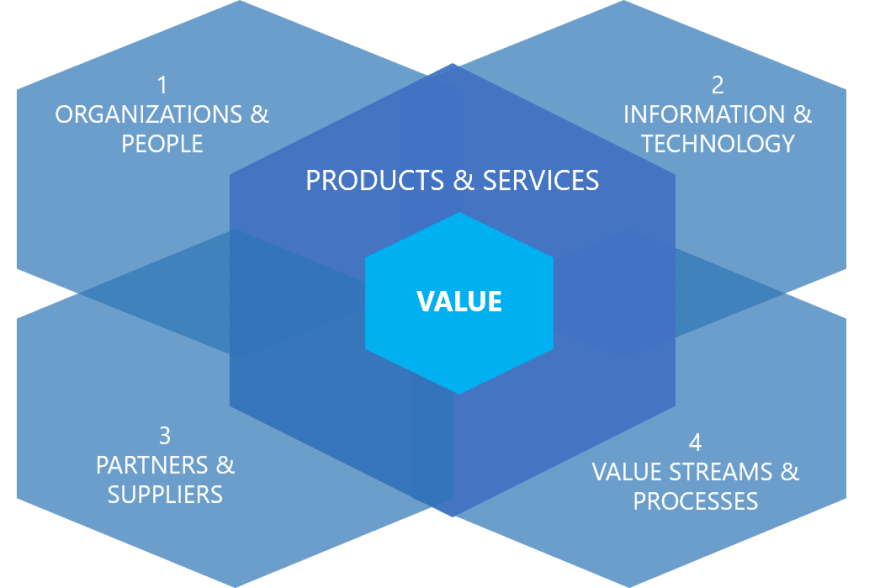ITIL is the acronym for Information Technology Infrastructure Library, which is a framework that encompasses a set of best practices for delivering IT services. ITIL provides a standardized approach to build and manage stable IT Infrastructure that offers lesser risks, higher efficiency, and scalability for growth.
As one of the most popular and widely accepted framework for IT service management today, organizations use the best practices laid down by ITIL for increasing operational efficiency and IT service improvement. The nucleus of ITIL is structured around a Service Lifecycle which consists of the five phases below:
In a practical scenario, organizations use a systematic approach to select, plan, support, and deliver IT services. It is easier said than done since it is a herculean task for an organization to align itself with business. In the real world, it is not simple to offer quality service to customers amongst constraints such as unplanned change management, less proactive helpdesks, and less comprehensive SLAs that lack clarity.
The framework of ITIL is divided into five broad stages or categories:
- - Guiding principles
- - Governance
- - Service value chain
- - Continual improvement
- - Practices
1)Guiding principles
Guiding principles form the strategy laid down for the management of IT Infrastructure for secure collaboration and increased business value.
- Focus on value: Question the current strategy and evaluate the business value. All plans within the strategy should add value to achieve the business objective.
- Start where you are: Assess existing process, identify areas of improvement, and seek to enhance it.
- Progress iteratively with feedback: Focus onsmall improvement steps and evaluate progress. Select manageable and measurable changes. Once these are embedded, move forward on to the next iteration
- Collaborate and promote visibility: Understand end-users and work with them to plan improvements, then review failures and successes together
- Think and work holistically: Organization does not limit thoughts to hardware or software but focuses on the latest technology to reduce dependencies
- Keep it simple and practical: Focus only on required processes as many things change
- Optimize and automate: Emphasize on optimizing process first and then automate to improve inefficiencies.
2) Governance:
Governance is a critical part and more like a Framework to align our organization with the activities. It also allows controlling and ensures that all activities comply with the guiding principles of ITIL to achieve the final goal.
3) Service value chain (SVS):
The SVS is a set of interconnected activities required to realize the value and deliver results to the end-users. There are six main activities within the service value chain:
- Plan: Involves creating a layout along with the policies to define the approach needed to achieve the organization objective
- Improve: Devise strategies that target to improve the practices, services, and products continually.
- Engage: This activity will facilitate the engagement with collaborators to obtain their precise requirements needs and pain points
- Design and transition: Create new services and enhance existing services
- Obtain/build: Obtain customer specifications and create the service modules for meeting their requirements
- Deliver and support: Push out the services that are being used by the relevant stakeholders, meet their specifications
4) Continual improvement:
Implement a continuous improvement across the entire service lifecycle. ITIL 4 offers a Continual Improvement model which is applied to all facets of products and services alike. However, organizations use alternative improvement approaches like Lean, Six Sigma as well.
5) Practices:
Practices are one of the most critical parts of the service value chain that allows us to deliver valuable services to the end-user. ITIL 4 specifications separate practices into four broad categories:
- Organizations and people: Define and assess the systems and culture, roles and skills to deliver the services
- Information and technology: To deliver services, organizations select the available hi-tech and data at their disposal
- Partners and suppliers: Forge strong relationships with stakeholders including third parties for service delivery
-
Value streams and processes: Define all the processes, workflows, and activities that add value to the service. Thirty-four practices are divided into three management areas (the practices may be referred to in ITIL documentation).
- General Management: 14 practices
- Service Management: 17 practices
- Technical management: 3 practices
To extract maximum benefit from ITIL, an organization need not employ all the practices. The trick to success is to use the ones that add value and align to strategic objectives. For example, many organizations tried to use virtualization and network transformation that needs ITIL Framework, but lack of expertise has resulted in overkill at an extensive cost.
(Also read: Why Businesses Should Adopt Managed Cloud Security Services)
References:
https://www.happiestminds.com/whitepapers/Adopting-ITIL-Framework.pdf
https://www.axelos.com/best-practice-solutions/itil/what-is-itil
http://www.ipedr.com/vol5/no1/8‐H00038.pdf
https://stephenmann.wordpress.com/










Top comments (0)